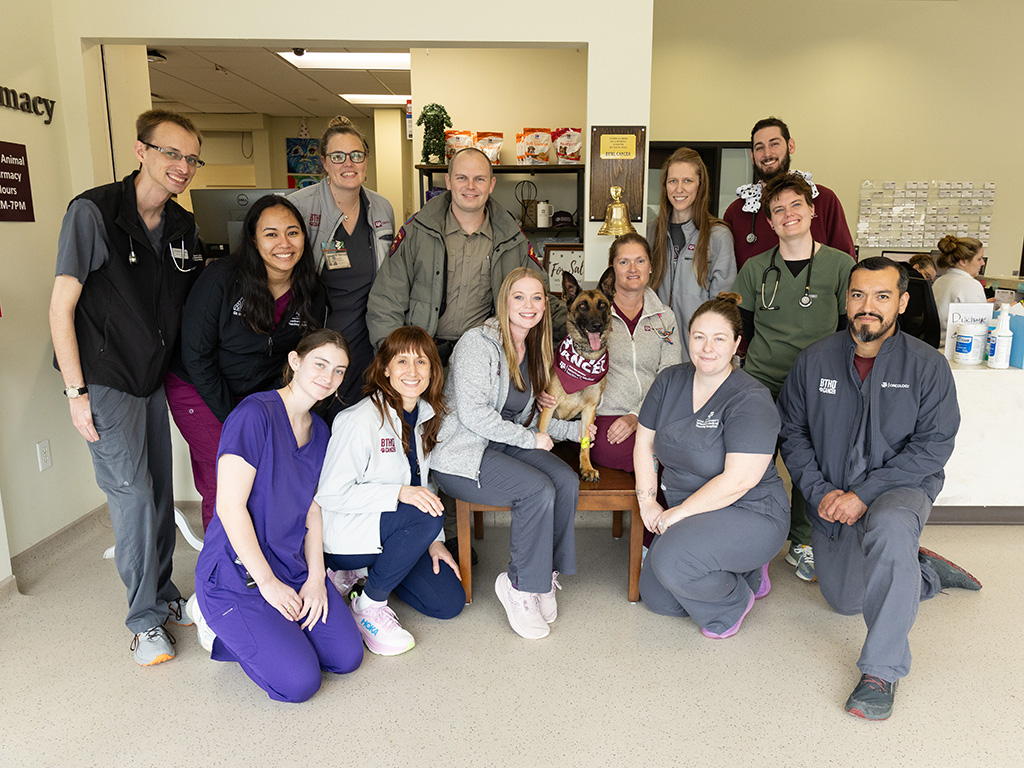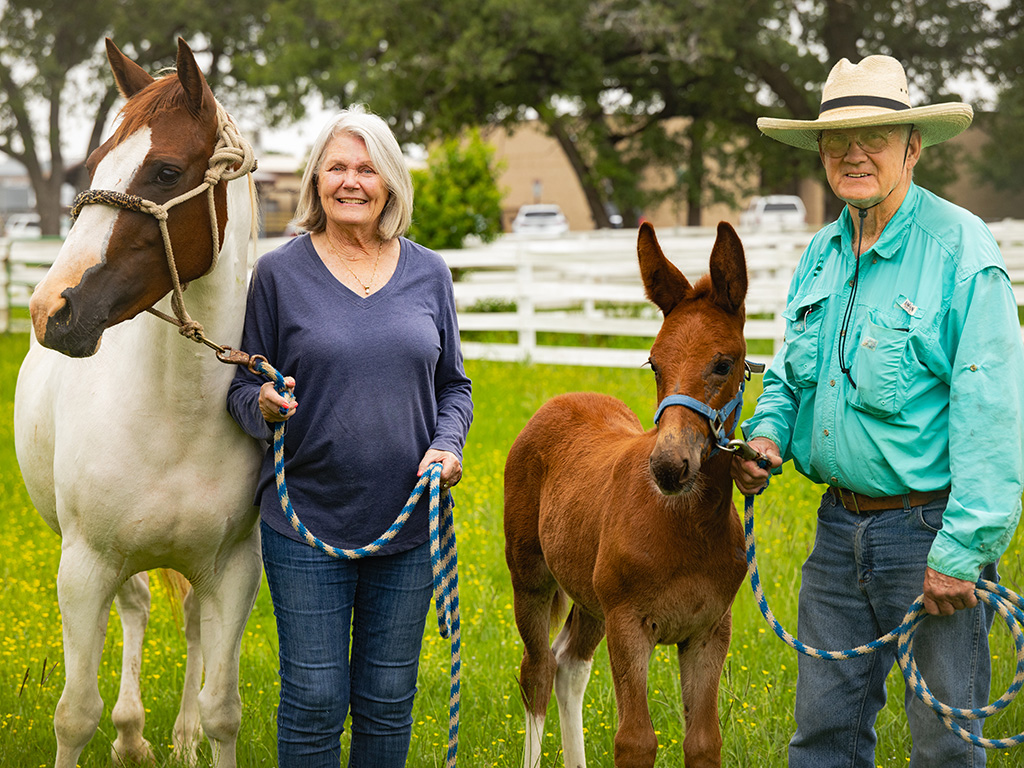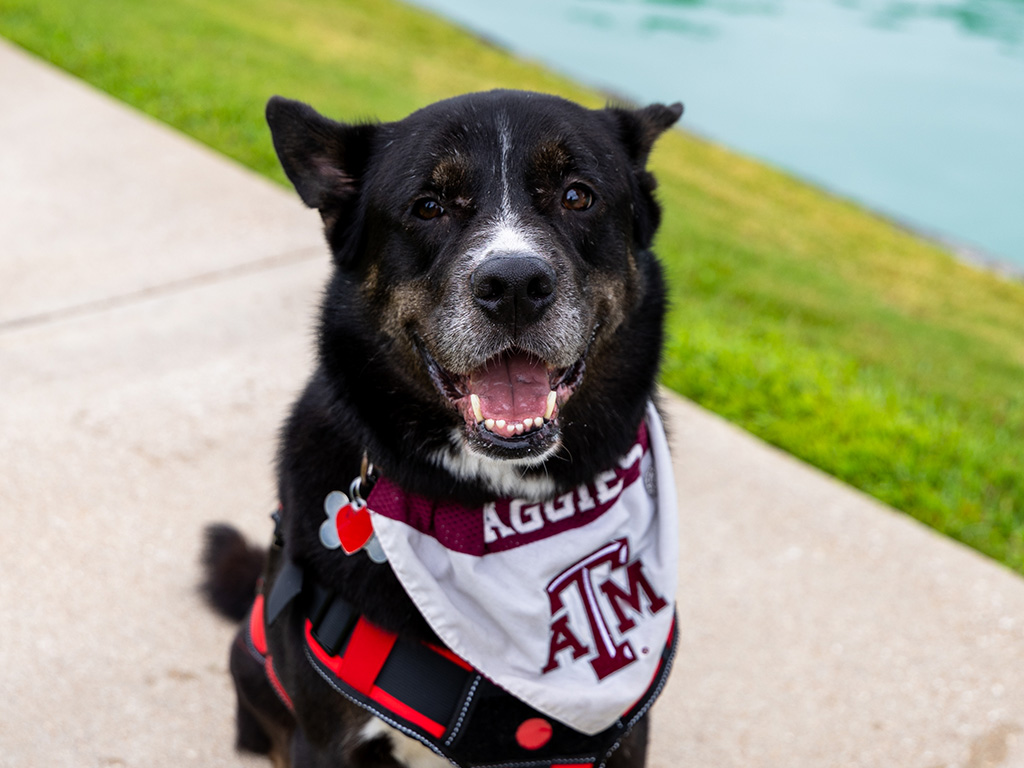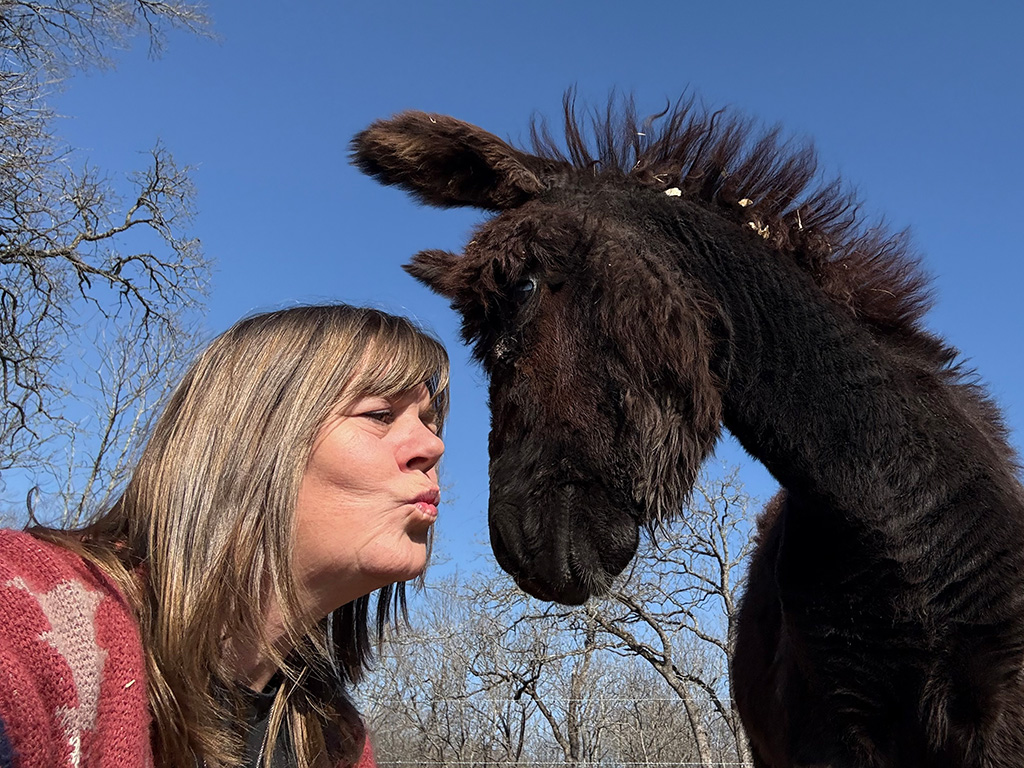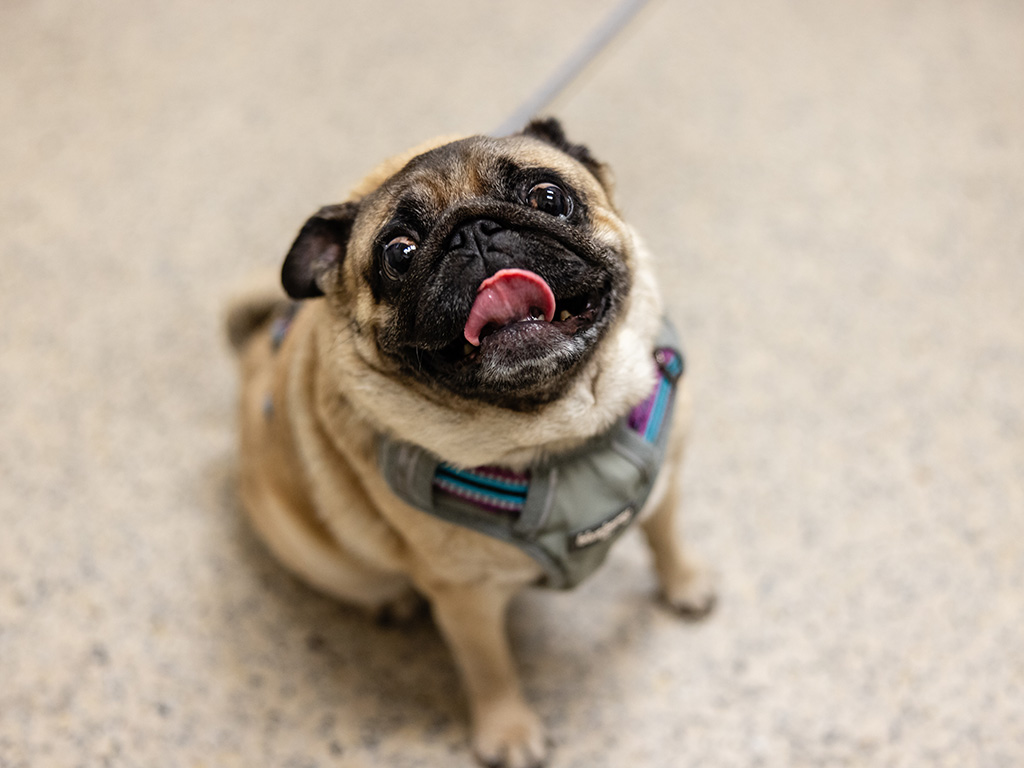Helping Hammie Breathe Easy: Texas A&M Veterinarians Save Cat With Windpipe Obstruction
Story by Ainsley Treesh, VMBS Marketing & Communications
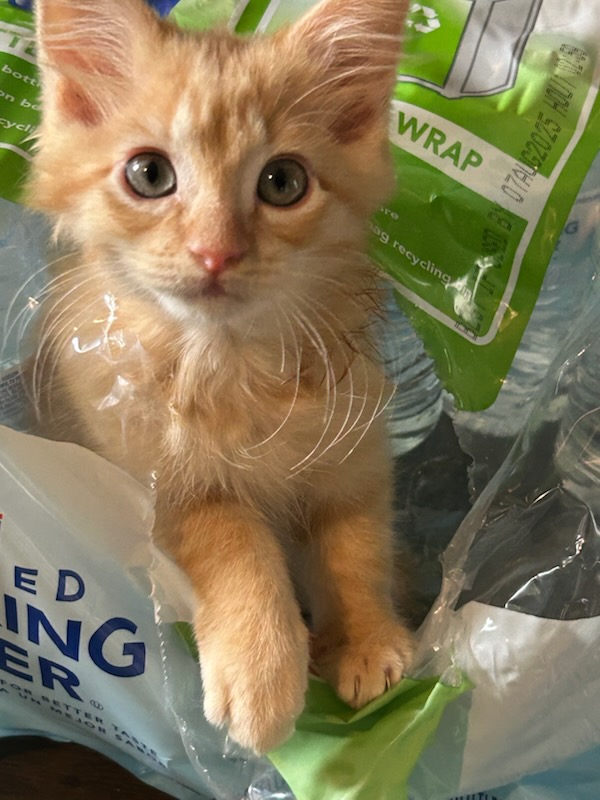
Hammie, an orange tabby, had a rough beginning — he started life as a feral kitten outside a prison in Huntsville, Texas, and even after being rescued by one of the prison’s nurses, his challenges weren’t over.
After Hammie developed an unusual cough, his veterinarian detected a foreign object in his windpipe that was obstructing his breathing, leading his owners to fear for the worst.
But thanks to the dedication of his owner, Cheryl Dobie, and Texas A&M veterinarians, Hammie has received the life-saving care he needed and has begun enjoying his new life with the Dobie family.
Finding A New Family
Hammie first met Dobie in April 2024, when her husband, Jay, was among the compassionate nurses who rescued the kitten and his littermates from outside the prison.
Although he was young, Hammie quickly adjusted to life at the Dobie home.
“He runs the house,” Dobie said. “We have three other cats, all girls, so he definitely has that boy mentality of always making sure we know he’s boss, but he is also the kindest cat I’ve ever known.”
Because of that, Dobie and Hammie have formed a deep bond.
“Most cats have one person they love most, and I’m that person for Hammie,” Dobie said. “I work from home, so he is with me 24/7 — he’s my everything.”
An Unforeseen Complication
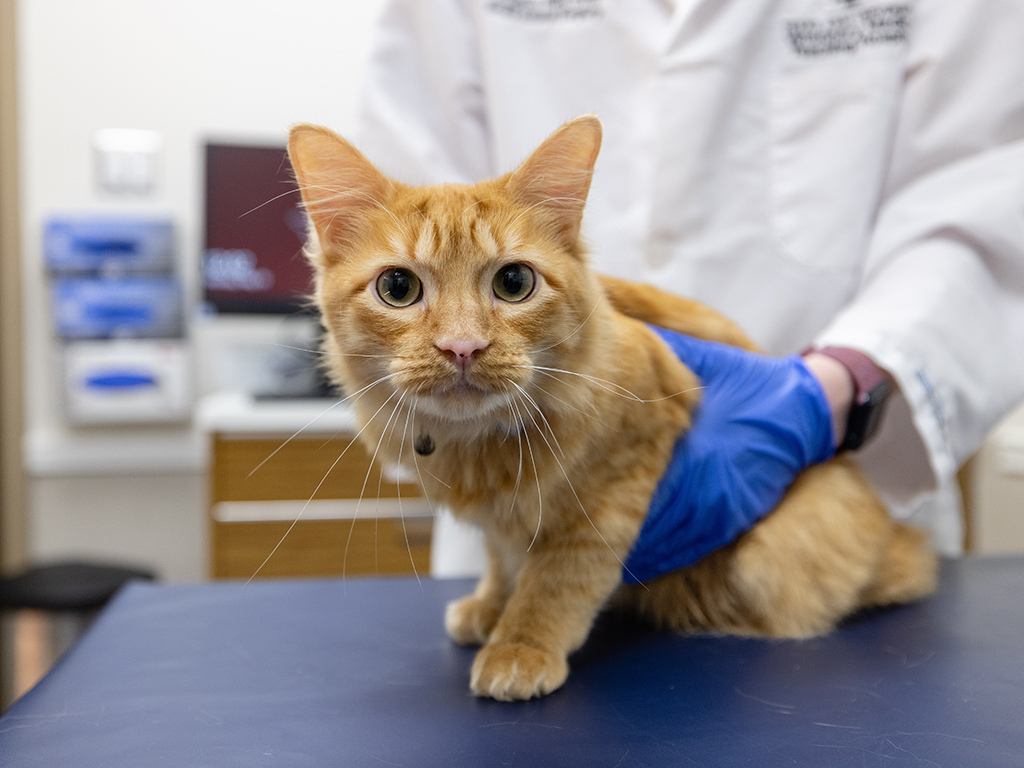
In October 2024, Dobie noticed that Hammie had begun having unusual coughing fits. Always erring on the side of caution, she brought him to her local veterinarian, who assumed the cough was caused by a hairball.
However, as Hammie’s cough persisted, Dobie took matters into her own hands and began making conscious efforts around her home to cure his cough.
“I thought it could be asthma, so we changed cleaners, stopped burning candles, and did everything you could think of,” Dobie said. “Then, one day it came to the point where his cough made it difficult for him to breathe. I rushed him to an emergency clinic in Houston, where they did an X-ray and found a foreign object.”
After discovering the object, the veterinarian was not optimistic about Hammie’s chance of recovery. Dobie was devastated by the prognosis, but she wasn’t ready to quit fighting.
“They had him in an oxygen tank, and when he saw us, he sat up and started pawing at the glass,” Dobie said. “I could tell he wanted us to take him home, so we did and I spent the next 12 hours researching and calling veterinarians to see if anyone could help him.”
While most of the veterinary clinics offered the same prognosis, Dobie was finally given some hope after a clinic referred her to the Texas A&M Small Animal Teaching Hospital (SATH).
“Within 30 minutes of calling Texas A&M, we were in the car heading to see them,” Dobie said.
A Renewed Sense Of Hope

After arriving at the SATH, Hammie was brought to the Emergency & Critical Care Service, where he was stabilized before being transferred to the Soft Tissue Surgery Service.
“Hammie presented with a foreign object deep in his airway and a concurrent pyothorax, or an infection in the chest” said Dr. Meghan Watt, a second-year resident in orthopedics and soft tissue and minimally invasive surgery.
Aware of the foreign object, the soft tissue team performed a CT scan to determine where it was located and what problems they could potentially face in surgery.
“The foreign object was in the carina, an area at the end of the trachea right before it splits to supply the lung lobes,” Watt said. “The object was sharp and starting to protrude out of the airway, which was causing an infection in his chest.”
The Soft Tissue Surgery Service worked closely with the Interventional Radiology Service as they developed a plan for surgery. The teams were in the operating room together, collaborating as they completed Hammie’s procedure.
“At the start of surgery, interventional radiology was able to successfully remove the foreign object with a bronchoscope, allowing our team to then open his chest and flush everything to help control the infection,” Watt said. “We inspected Hammie’s lungs to make sure there were no punctures and also collected a culture swab of his chest to identify the bacteria, which would guide us when prescribing antibiotics.”
Although the foreign object was unidentifiable following surgery, Dobie had her suspicion of what it could have been.
“My daughters and I built miniature houses, and they have tiny metal pieces we cut,” Dobie said. “I am 95% sure that is what the object was when they showed me, but it was hard to tell for sure. We put those houses up and don’t work on them anymore.”
After surgery, Hammie remained at the SATH for four days and was monitored closely to make sure he was recovering successfully and responding to antibiotics.
A Second Chance
Throughout the duration of Hammie’s visit at the SATH, Dobie stayed in close connection with Watt and the rest of Hammie’s care team.
“Dr. Watt made sure that I understood what was happening every step of the way,” Dobie said. “She was patient and kind, even when I was emotional, and never made me feel unheard. I had peace with the situation and that they were going to do everything they could.”
Hammie has fully recovered from surgery and returned home, where he is back to running the house and keeping Dobie company while she works.
“When he came home from surgery, I could tell he was so happy and I was so grateful that I cried,” Dobie said. “I can tell Hammie is glad to be back home with us and feeling better.”
Dobie and her family are thankful for the compassionate care they received from the veterinarians and staff at the SATH.
“They’re fantastic people and I can’t even explain how appreciative we are,” Dobie said. “I know it’s just another day on the job for them, but for us it could mean 20 more years with him — that means everything to us.”
###
For more information about the Texas A&M College of Veterinary Medicine & Biomedical Sciences, please visit our website at vetmed.tamu.edu or join us on Facebook, Instagram, and Twitter.
Contact Information: Jennifer Gauntt, Director of VMBS Communications, Texas A&M College of Veterinary Medicine & Biomedical Sciences, jgauntt@cvm.tamu.edu, 979-862-4216
You May Also Like

